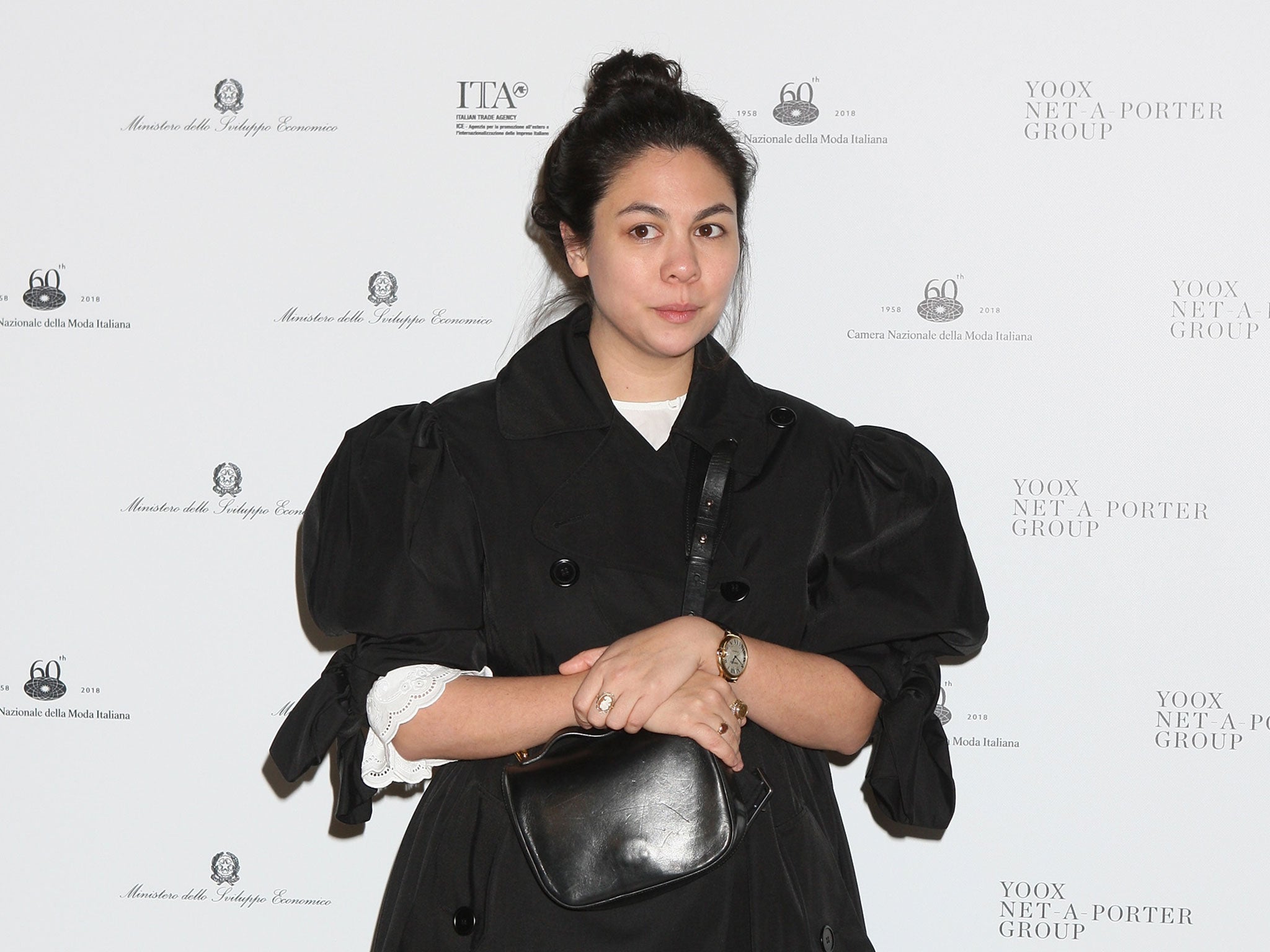London Fashion Week: Simone Rocha, a celebration of the Tang dynasty

It was in the regal environs of neo-classical Lancaster House in London’s regal St James’ district that Simone Rocha presented her collection for Spring / Summer 2019.
Built from Bath stone in 1825 for the Duke of York and Albany, the stately home, now managed by the Foreign and Commonwealth Office, is a far cry from London Fashion Week hub the British Fashion Council show space at 180 Strand.
It’s a typical Rocha show spot: gilded ceilings, red carpets and crystal chandeliers. The designer always prefers to present collections in settings that tell a story, from the opulent ballroom at Goldsmith’s Hall, to the brutalist bowels of the Tate Modern’s Turbine Hall. Settings like these turn a trade show into a theatrical experience.
At 32, Simone Rocha has become a designer whose unique vision will go down in the fashion history canon as something akin to the work of intellectual designers like Coco Chanel, Madeleine Vionnet and Muccia Prada. Eschewing trends completely, she presents something as close to art as fashion comes, and a fantasy of where it can take the wearer.
Learning to crochet and knit in the studio with her father (the designer John Rocha CBE) from the age of 13, Rocha went on to get an MA in fashion design at Central Saint Martins under the tutelage of the legendary Louise Wilson, whose formidable teaching methods fostered the work of sartorial stalwarts the likes of Alexander McQueen, Phoebe Philo and John Galliano. She debuted her brand at London Fashion Week in 2010 and has since won three British Fashion Awards, has shops in London and New York and a celebrity fan base that includes Gillian Anderson, Julianne Moore and Rihanna. Refusing to join the hamster wheel of fashion production that can demand as many as six shows a year, Rocha stands firm at two.
Taking inspiration from Victoriana, Elizabethan dress and Romanticism through voluminous, feminine bell skirts and puff sleeves, and combining them with contemporary references from the military to bondage and motherhood with flashes of Perspex, Rocha’s recurring themes include pearls, straps, veils, tulle, organza and lace. Along with her all-female design team, the Dublin-born Londoner presents catwalks of queens walking in flat fluffy shoes.
This season Rocha took inspiration not from Elizabethan England, but from her other heritage: China. Explaining after the show, “It’s about me being half Chinese. I was looking at my whole family, they’re very much my team and I decided to reflect that.
“We’d been celebrating Qingming, it’s the Chinese equivalent of the Day of the Dead. We walk up a hill and we go and visit my grandparents and wash the graves. It all stemmed from there.”
Shape and form was a key focus this season, with enormous, stiff, A-line tops, dresses with bouffant leg-of-mutton sleeves and two styles, in particular, notable for their references to past designers. The first, a blouson strapless dress that ties just above the knee with a drawstring: a shorter version of Paul Poiret’s so-called ‘hobble skirt’ of 1908. And then there were the strapless dresses that simply hung around the models’ chests like tents, reminiscent of early Cristobal Balenciaga. “The dresses were made from spheres. They came from the idea of skirts and then hitching them right up so they became these dresses.”
But undoubtedly the most striking element of the collection were the wide-brimmed hats overlaid by long, hanging veils embellished by hundreds of tiny flowers, a reference to those worn during the Tang dynasty (618-907).
As with much of Rocha’s work, art history made a noticeable appearance, through embroidered line drawings, tapestry dresses and large bell skirts onto which were printed oil portraits of women. “The paintings were 16th century concubine paintings,” explains Rocha. “I found the paintings in an antique market in Hong Kong, they were an interpretation of the original. And we decided to interpret them ourselves. We did our own paintings similar to the ones I’d found and we used those for the clothes.”
Accessories – the trickle-down element of Rocha’s oeuvre – will no-doubt be commercial wins, as beaded headbands, large pearl-drop earrings and flat feather-rimmed mules and fluffy sliders added delicate lively touches. “The little jelly shoes are supposed to be like no shoes, like being barefoot.”
It’s no longer surprising to see a spectacular collection from Rocha. What is surprising is how she continues to take people’s breath away.
“I wanted it to be very playful, so in the end it was joyful.”
Join our commenting forum
Join thought-provoking conversations, follow other Independent readers and see their replies
Comments
Bookmark popover
Removed from bookmarks